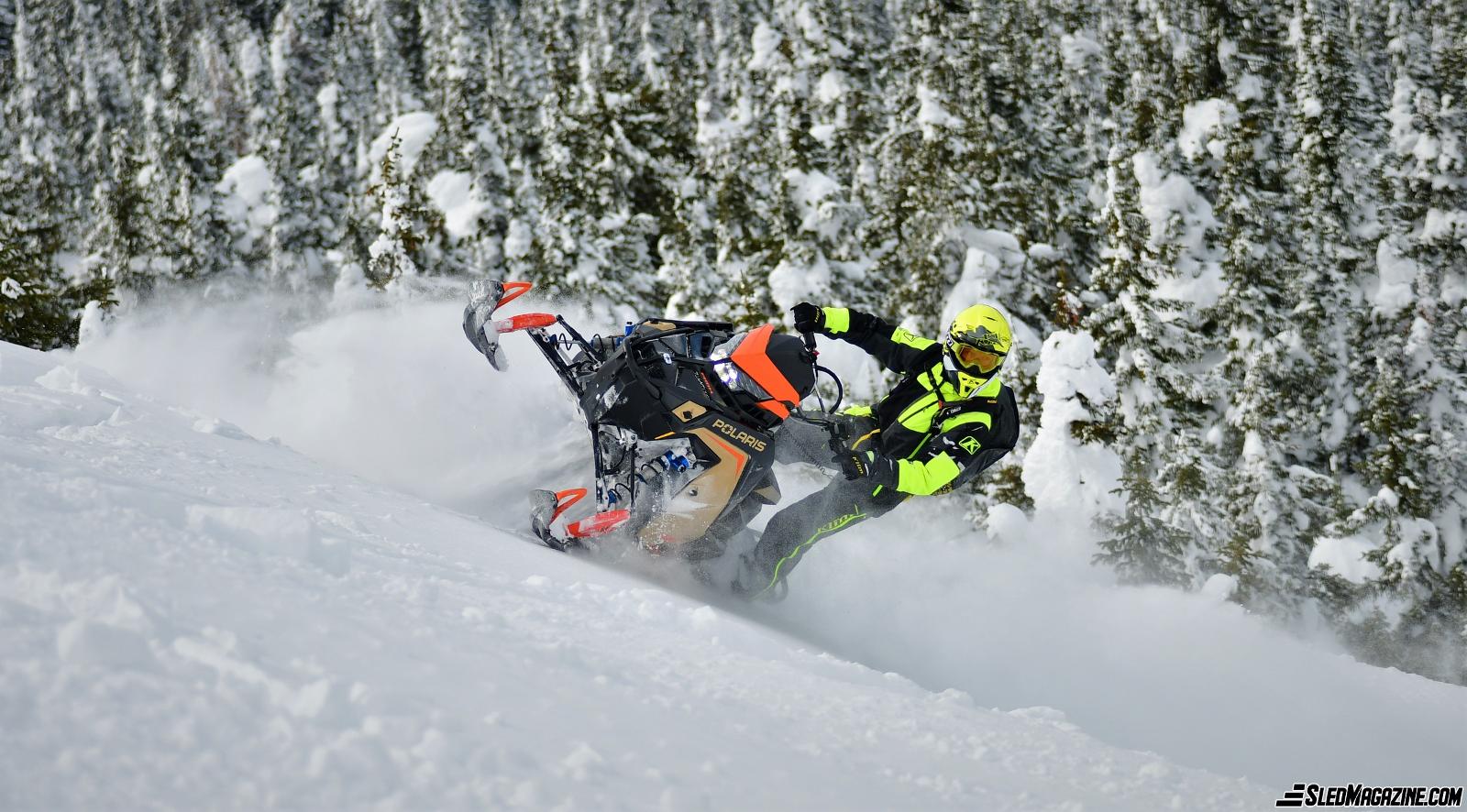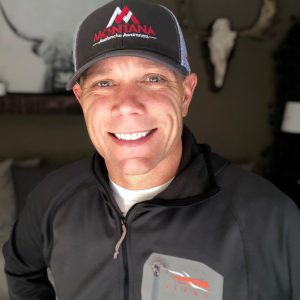Polaris came out swinging with its model year 2022 mountain lineup. They introduced the Matryx chassis, with a totally new design. Last year, the Matryx platform was introduced on some of their trail sleds and we were all hoping to see it this year with the mountain sleds. If a full chassis change for the mountain sleds wasn’t big enough news, Polaris dropped another bomb with the introduction of the 850 Patriot Boost, a turbo version of their 850 Patriot motor for the RMK and Khaos models. To cap all that off, they also refined their tunnel and cooling system by introducing the Slash models. I was able to get my hands on a few of Polaris’s new mountain models and test this next level, cutting-edge technology in the place where it matters most—the mountain.
Matryx platform
The Matryx platform in Polaris’s mountain lineup not only gives their sleds an aggressive fighter jet styling and look, but also has advanced design features and engineering. The Matryx platform has a snocross-inspired cockpit to improve the rider’s connection and feel to the sled and reduce effort when riding. The seat, tank, gauge console, footwells, and side-panel bodywork are all narrower and give the rider more freedom of movement. The RMK in the Axys platform was designed to be a technical backcountry weapon and it was. With the Matryx platform, none of that technical performance was lost with the new chassis. If fact, it was enhanced with a slightly raised platform. With the Matryx RMK platform there’s increased clearance, which reduces drag and helps get the sled on top of the snow and keep it there.
Patriot 850 Boost
From inception, the Patriot 850 motor was designed and destined to have a turbo, which comes in the form of the 850 Patriot Boost. Polaris and their engineers have had the 850-factory turbo in the works for years. But they didn’t just slap a turbo on a motor they already had. This motor was specifically designed for a turbo years ago. Since they designed the motor around having a turbo, it has some cool features like a vertical turbo design with a reverse rotating and scalloped turbine. This design reduces weight and improves airflow, resulting in quick, smooth power delivery.


The SmartBoost system—with its layout and design being in a tight compact package—keeps boost lag to a minimum. By keeping the boost lag down, Polaris has also been able to smooth out the power delivery and keep the power band from coming on and hitting too hard.
Since two-stroke mountain sleds started getting aftermarket turbos, the lag has been an issue. The early days of riding a mountain sled with an aftermarket turbo was a lot like turning on a light switch. You either had no power or all of it at once, making them hard to control. Riding a machine with that type of power delivery was fine if you were in a big open bowl or meadow, but if you’re in a steep, technical climb or in tight trees where many of us mountain riders like to go, the turbos actually made riding the sled harder.
That’s not the case with the Patriot Boost. Its power delivery is awesome and feels like a stock 850 until you need more power. It has a very linear power band for maximum control, while giving you way more power when you want it. I tested the sleds at about 9000 ft (2743 meters) elevation and the difference between the 850 Patriot and the 850 Patriot Boost was huge. Polaris claims that at sea level the increase in horsepower with the turbo is 10% more than their 850, but at 10,000 ft the Boost version produces 50% more horsepower. Yes, that’s not a typo, the Patriot Boost has 50% more power than the 850 Patriot motor at 10,000 ft.


Taking both the 850 and 850 Boost models up some of the same steep terrain, the power difference is massive. The stock 850 did good and climbed the steep terrain, but I had to keep it wide open and do more side hill carving to make the climb. The same slope with the Patriot Boost was way easier; I actually had to keep letting off to not rocket over the top. The power difference between these two sleds was crazy and awesome. The Patriot Boost is pushing an impressive 9 psi of boost. For the type of mountain riding I like to do, the early years of turbos on mountain sleds weren’t that appealing to me with their power delivery and handling characteristics. Now, with crisp, smooth power delivery, very little lag, and 50% more power than the stock 850 engine at 10,000 ft, how do you not buy one?
Slash : What it means
When Polaris adds Slash to one of their sleds, they’re referring to tunnel modifications. To start, Polaris has shortened the tunnel. Then they put a taper on the end, which helps with reducing weight and drag. Anytime you can reduce drag, especially on a mountain sled, it will dramatically increase performance and will be noticeable while riding on the deep backcountry days. Along with the modified tunnel, Polaris also changed the cooling system to be more centralized, now only going out as far as the fuel tank on the tunnel. This helps keep weight down in two ways: the coolant capacity is reduced, and it keeps the weight of the cooling system more centralized to the center of the sled, thus reducing the build-up of snow and ice on the tunnel. So, when you add up the combination of a shorter tunnel that’s been tapered, with less weight because of cooling system changes and less buildup of snow and ice it all adds up to a lighter, more maneuverable sled. Polaris says the Matryx Slash is 22% lighter through the snow, helping the rider via increased control and reduced fatigue.

I really liked all the upgrades and modifications Polaris did to the mountain line-up this year. There are actually so many engineering upgrades, features, and modifications to their 2022 mountain line that I couldn’t get all of them in one review. Next season, I’d like to do a long-term, in-depth review of the Polaris Patriot Boost in either the RMK or Khaos package. We all can dream, right? For now, I’ll be the guy waiting patiently, all geared up, fingers crossed, and dreaming of boost in my future.










